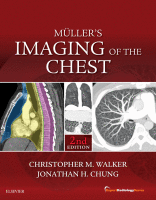Physical Address
304 North Cardinal St.
Dorchester Center, MA 02124

Organizing pneumonia (OP) is a histologic pattern characterized by the presence of intraluminal granulation tissue polyps within alveolar ducts and surrounding alveoli associated with chronic inflammation of the surrounding lung parenchyma. Because the granulation tissue polyps frequently also involve the…

Etiology, Prevalence, and Epidemiology Nonspecific interstitial pneumonia (NSIP) is a chronic interstitial lung disease characterized by homogeneous expansion of the alveolar walls by inflammation or fibrosis or both. NSIP is the second most common chronic interstitial pneumonia, after usual interstitial…

Etiology, Prevalence, and Epidemiology Idiopathic pulmonary fibrosis (IPF) has been defined as “a specific form of chronic fibrosing interstitial pneumonia limited to the lung and associated with the histologic and/or CT appearance of usual interstitial pneumonia (UIP).” IPF is the…

Etiology Leukemias are a group of malignancies in which abnormal cells, usually abnormal white blood cells (leukocytes), are produced in the bone marrow. Leukemias may be classified as myeloid, also known as myelogenous or myeloblastic, or lymphoid, also known as…

Etiology, Prevalence, and Epidemiology Hodgkin lymphoma (HL) is a neoplasm of B lymphocytes characterized by the presence of Reed-Sternberg cells. HL accounts for 10% of all cases of lymphoma and approximately 0.6% of all cancers diagnosed annually, with an annual…

Overview Non-Hodgkin lymphoma (NHL) is a heterogeneous group of diseases that accounts for 90% of lymphoma diagnoses, with the other 10% being Hodgkin lymphoma (HL). NHL arises during lymphocyte differentiation in either the humoral or cell-mediated immunity lineages of the…

Pulmonary Lymphoid Hyperplasia (Follicular Bronchiolitis) Etiology, Prevalence, and Epidemiology Pulmonary lymphoid hyperplasia, also known as follicular bronchiolitis or hyperplasia of bronchus-associated lymphoid tissue, is a benign condition characterized histologically by the presence of polyclonal lymphoid aggregates along the bifurcation of…

Etiology, Prevalence, and Epidemiology Pulmonary metastases are common—present at autopsy in 20% to 54% of patients with extrapulmonary malignancy. The most common primary sites associated with pulmonary metastases in biopsy series are the breast, colon, kidney, uterus, bladder, melanoma, and…

Etiology, Prevalence, and Epidemiology Inflammatory pseudotumor, also known as inflammatory myofibroblastic tumor, is a quasineoplastic lesion that clinically and radiologically tends to mimic a malignant neoplasm and that histologically consists of a mixture of inflammatory cells, myofibroblastic spindle cells, and…

Etiology, Prevalence, and Epidemiology Pulmonary hamartomas are benign neoplasms, probably derived from bronchial wall mesenchymal cells. Hamartomas are the most common benign pulmonary neoplasm and account for about 8% of primary lung tumors. Although they may be seen in adolescents…